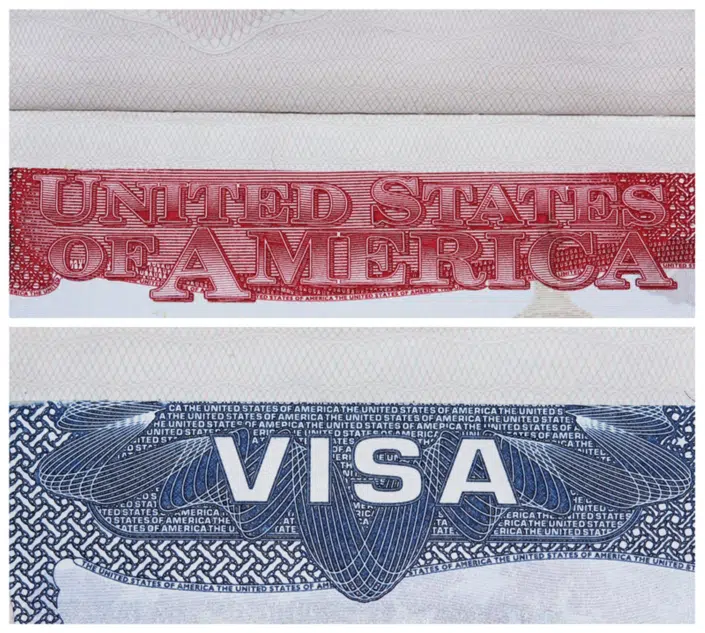EB-5 Children and the New CSPA Guidance: What Changed, What Didn’t, and Where the Real Risk Still Lives
September 1, 2025 | By Michael A. Harris
EB-5 investors sit in a very particular moment. All three “reserved” (set-aside) EB-5 investor visa sub-categories are presently “current” on the Visa Bulletin’s Final Action Dates chart (“Chart A”), which may cause families into thinking the Child Status Protection Act (CSPA) can’t surprise them. Outside EB-5, by contrast, most employment-based queues are backlogged (with the partial exception of EB-1 for non-China/non-India). This asymmetry creates a uniquely EB-5 problem: families may embrace concurrent filing (I-526E + I-485) and assume they’ve protected a near-21-year-old child—only to learn later that the age may not be locked in on the date of filing the I-485 application.
USCIS’s August 8, 2025, policy update sharpens that risk. Below, I explain what the update actually changes, what it leaves untouched, and how EB-5 families should plan. (We’ll publish a separate post on how this update affects other EB categories.)
Why USCIS Changed the CSPA Playbook—And What It Now Says
Before we debate strategy, it helps to understand the government’s stated goal. USCIS announced it updated the Policy Manual “to clarify that a visa becomes available for the purposes of CSPA age calculation based on the Final Action Dates chart of the Department of State Visa Bulletin,” effective August 15, 2025 (with transitional treatment for adjustment cases filed earlier). The point, USCIS says, is to align with the Department of State so everyone uses the same chart for CSPA age.
The Policy Manual now instructs officers that, for family- and employment-based adjustment cases, two things define the CSPA “visa-available” date:
- (1) the petition’s approval date, and
- (2) the first day of a month when the Visa Bulletin’s Final Action Dates (Chart A) show the case as current.
USCIS uses the later of those two to compute age. The Manual also reiterates that the I-485 filing date does not matter for the age calculation itself, which says, “While an alien must file an adjustment application or otherwise seek lawful permanent resident (LPR) status in order to be considered a child for CSPA purposes, the date the alien files an adjustment of status application is not relevant for the CSPA age calculation.”
USCIS further clarifies that while you may still file I-485 early during months when Chart B (Dates for Filing) is authorized, CSPA age is always computed off Chart A; and filing on Chart B can still satisfy the 1-year “sought-to-acquire” requirement, but it doesn’t set the child’s age.
How CSPA Actually Works in EB-5—and Where Families Misstep
CSPA protection for employment-based derivatives requires a two-step method:
- Step 1 – Age calculation. On the “visa-available” date, USCIS takes the child’s biological age and subtracts the petition’s pendency (filing-to-approval) to get the CSPA age. If that number is under 21, you’ve cleared the first hurdle.
- Step 2 – Sought to acquire. The child must take a qualifying step within one year of visa availability—filing I-485, submitting DS-260, paying the IV fee, or filing I-824 (and limited extraordinary-circumstances exceptions remain).
Where families misstep is assuming an early I-485 filing “freezes” age. It may not. Filing early does meet the “sought to acquire” requirement, but under current policy USCIS won’t do the age determination math that locks the age in until the petition is approved and a Chart-A-current month arrives—whichever comes later. This begs the question: Will the USCIS use the Visa Bulletin for the month when the I-485 was filed, or the month after the I-526/I-526E petition is approved? The USCIS policy is not specific, and the CSPA does not explicitly provide a requirement.
What the CSPA Actually Says
The governing part of the CSPA is under INA Section 203(h), which was implemented by Section 3 of the CSPA and says:
§3. TREATMENT OF CERTAIN UNMARRIED SONS AND DAUGHTERS SEEKING STATUS AS FAMILY-SPONSORED, EMPLOYMENT-BASED, AND DIVERSITY IMMIGRANTS.
Section 203 of the Immigration and Nationality Act (8 U.S.C. 1153) is amended by adding at the end the following:
(h) Rules for determining whether certain aliens are children
(1) In general. For purposes of subsections (a)(2)(A) and (d), a determination of whether an alien satisfies the age requirement in the matter preceding subparagraph (A) of section 1101(b)(1) of this title shall be made using–
(A) the age of the alien on the date on which an immigrant visa number becomes available for such alien (or, in the case of subsection (d), the date on which an immigrant visa number became available for the alien’s parent), but only if the alien has sought to acquire the status of an alien lawfully admitted for permanent residence within one year of such availability; reduced by
(B) the number of days in the period during which the applicable petition described in paragraph (2) was pending.
(Emphasis added.)
The above says that the age determination is made based on the age of the child on the date when “an immigrant visa number becomes available”, reduced by the number of days the “petition” (i.e., the I-526/I-526E petition, not the I-485 “application”) was pending. The law does not take into account scenarios where the petition and application were filed simultaneously, or concurrently, when a “an immigrant visa number” is already “available” at the time of filing an I-485 application. (Note, the CSPA only says that the filing of a family-based immediate relative immigrant petition locks in the age of the child.) At present, all I-526/I-526E petitions being filed under a reserved set-aside category (i.e., high unemployment area (HUA), rural, or infrastructure) may be filed alongside an I-485 application by eligible children of EB-5 investors.
Why This is Potentially Risky for EB-5 Right Now (Post-RIA and Pre-RIA)
When Chart A is comfortably current, as set-asides have been for several years post-RIA, it’s tempting to think CSPA issues are academic. But EB-5 has always lived with sudden Visa Bulletin shifts. If Chart A later retrogresses, a concurrently filed case can be stranded if USCIS applies its policy as follows:
- The child met “sought to acquire” (by filing I-485 early), but
- Age still isn’t computed until after I-526E approval and in the next month when Chart A is current again.
- If that future “later-of” date yields 21+ after subtracting only the I-526E pendency, the child ages out.
USCIS
For pre-RIA investors already accustomed to Chart-A volatility, the update also formalizes the reality they’ve been living. Chart B is useful for filing but irrelevant to the age math because USCIS has said that Chart A rules both the math and the 1-year window.
The Unresolved Legal Question: Statute vs. Policy
Here’s the hard truth: the statute and the policy don’t line up cleanly. INA §203(h)(1) says the child’s age is determined “on the date on which an immigrant visa number becomes available,” conditioned on seeking to acquire within one year. Congress didn’t say anything about conditioning that date on petition approval, and it didn’t say an early-filed I-485 can never be the operative date when a visa is available.
USCIS, by contrast, defines in its online policy (not notice-and-comment regulations) that a “visa becomes available” for adjustment cases at the later of approval or a Chart-A-current month, and it flatly states the I-485 filing date is not relevant to the age calculation.
For years, challenges to agency CSPA interpretations ran into Chevron deference. Not anymore. In Loper Bright (June 28, 2024), the U.S. Supreme Court eliminated Chevron, instructing courts to interpret statutes de novo rather than deferring to agency views simply because the text is ambiguous. That shift re-opens arguments that CSPA’s plain text and purpose, protecting children from agency delay, do not support the “later-of” rule.
What that means pragmatically is that until a court says otherwise, officers may apply the USCIS Policy Manual’s “later-of” rule. But families may now have a stronger litigation posture if a child ages out solely because age was pegged to a month after approval rather than to the first Chart-A-current month the family actually filed in (or could have filed in).
And remember, even within the current framework, “sought-to-acquire” remains flexible: I-485, DS-260, fee payments, and I-824 all count, and extraordinary-circumstances relief exists (rooted in Matter of O. Vazquez and USCIS memoranda).
Two EB-5 Timelines That Look Alike, But End Very Differently
The CSPA snapshot date is critical to the analysis. If that snapshot happens early, the child usually wins. If it happens late, the child often loses. The policy update chooses the snapshot later than the statute arguably requires.
Scenario A. Concurrent filing that feels safe (but ages out).
Suppose a parent files an I-526E and concurrently files the I-485 on 01/01/2025. At that time, the child is 20 years old, and Chart A is current.
The I-526E remains pending for 12 months. On 01/01/2026, USCIS approves the I-526E. But by then, Chart A has retrogressed, and visas are no longer available. USCIS does not calculate the CSPA age at that moment because both conditions (approval + Chart A current) are not met.
The family waits. After another 14 months, on 03/01/2027, Chart A finally becomes current again. USCIS now applies the “later-of” rule: the visa is considered available on 03/01/2027 (the later of approval date or the next Chart-A-current month). At that time, the child is 22 years and 2 months old biologically.
USCIS subtracts the 12 months of I-526E pendency, resulting in a CSPA age of 21 years, 2 months. The child has aged out. Even though the I-485 filing at age 20 satisfied the “sought to acquire” requirement, the child never locked age because the snapshot was delayed until after retrogression.
Step-by-step breakdown:
| Step | What Happens | CSPA Impact |
|---|---|---|
| 01/01/2025 | I-526E + I-485 filed. Child is 20. Chart A current. | “Sought to acquire” satisfied. |
| 01/01/2026 | I-526E approved. Child is 21. Chart A retrogressed. | No age calculation yet (visa not available). |
| 03/01/2027 | Chart A becomes current again. Child is 22 yrs 2 months. | Visa “available” (later-of rule). |
| CSPA calculation | 22 yrs 2 months – 12 months pendency = 21 yrs 2 months. | Child ages out. |
I argue that what USCIS should have done is to calculate the age using a different formula. Under a plain reading of the statute, the child’s age should have been calculated at the time the visa was “available”, i.e., when the I-485 was filed on 01/01/2025, because on that date Chart A was current and the visa bulletin showed immediate availability. If USCIS had used this earlier “snapshot,” the child’s CSPA age would have been under 21, and protection would have locked:
| Step | Correct Interpretation | CSPA Impact |
|---|---|---|
| 01/01/2025 | I-526E + I-485 filed while Chart A is current. Child is 20. | This is the visa availability date. CSPA age snapshot should be taken here. |
| Age calculation | Bio age 20 – 12 months pendency = 19 years. | Child’s age under 21 → CSPA locks. |
Scenario B. The “trifecta” that locks protection.
Suppose a parent files an I-526E and concurrently (along with the child) files an I-485 on 01/01/2026. At that time, the child is 19 years old. The I-526E remains pending for 27 months before approval. On 04/01/2028, USCIS approves the I-526E. By then, the child is 21 years and 3 months old biologically.
Because the petition was pending for 27 months, USCIS subtracts that time from the biological age. The result: a CSPA age of 19 years old as of 04/01/2028. Since Chart A is current in April 2028, the visa is considered available on that date, and the already-filed I-485 satisfies the “sought to acquire” requirement.
Even if Chart A retrogresses the following month, the child’s age is locked on 04/01/2028, and the pending I-485 remains valid until adjudication. However, had Chart A not been current upon approval of the I-526E petition, then if USCIS applies its policy by using the visa bulletin after the I-526E petition is approved then the child may have around 2 years before they could age out.
Step-by-step breakdown:
| Step | What Happens | CSPA Impact |
|---|---|---|
| 01/01/2026 | I-526E and I-485 filed. Child is 19 years. | Petition pendency begins. “Sought to acquire” satisfied. |
| 04/01/2028 | I-526E approved. Child now 21 yrs 3 months biologically. | Chart A is current → visa “available.” |
| CSPA calculation | Bio age 21 yrs 3 months – 27 months pendency = 19 years. | Child’s CSPA age is under 21 years. |
| After filing | Chart A later retrogresses. | No effect — CSPA age locked as of approval/availability date. |
Quick Answers to the Questions We Hear Most
Does the new policy help EB-5 kids by using Chart B?
No. Chart B still gets you in the door to file and thus meets “sought-to-acquire,” but age is always computed off Chart A (and only on the later-of approval or a Chart-A-current month, subject to USCIS policy).
If we filed I-485 on Chart B before Aug. 15, 2025, do we keep the old, more flexible standard?
USCIS says it will continue applying the Feb. 14, 2023 policy approach to AOS applications pending before Aug. 15, 2025 that relied on it, but Chart A is the rule for new filings. That may mean that Chart B may be utilized by those investors either on the date the I-485 was filed or the date of the first visa bulletin showing availability in Chart B after the I-526/I-526E is approved.
Can “extraordinary circumstances” save us if we missed the 1-year window?
Possibly. O. Vazquez and USCIS’s memo keep that door open where delays were beyond the child’s control and the overall delay was reasonable. Facts matter.
Is there now a path to challenge USCIS’s “later-of” rule?
There’s a stronger legal argument post-Loper Bright because courts no longer reflexively defer to agency interpretations of ambiguous statutes. That doesn’t guarantee success, but it changes the posture meaningfully. Also, USCIS has not promulgated regulations via notice-and-comment (which was part of the claim made in the IIUSA lawsuit against the USCIS sustainment policy).
What EB-5 Families Should Actually Do
USCIS has standardized the CSPA trigger on Chart A and says that the age snapshot comes later, which is after petition approval and only when the Visa Bulletin’s Final Action Dates show current. For EB-5 investors, the practical effect depends on your timing:
- If your I-526E is already approved and Chart A is current, if eligible to adjust status file the I-485 now. That’s the strongest path to a locked CSPA age.
- If you’re eligible for concurrent filing, treat the I-485 as an insurance policy for “sought-to-acquire,” and potentially not a guarantee of age protection. Your child may still be exposed to retrogression before the age math can even happen.
- If your child is close to 21, model the exact date-math under multiple Visa Bulletin paths, and then decide whether to file now, wait for approval, or prepare to litigate if the only reason for aging out is the agency’s sequencing.
More broadly, the statute was designed to prevent children from losing out because the government moves slowly; the policy still bakes delay into the very moment that counts. With Chevron gone, that tension is no longer a theoretical law-school debate—it is a live issue courts can decide.




















